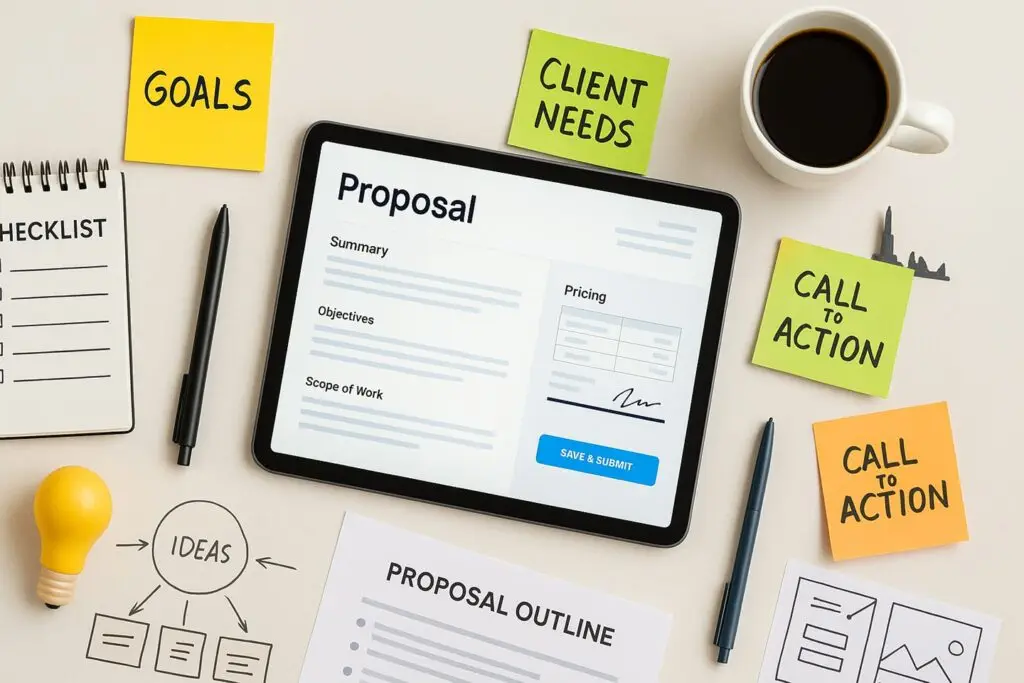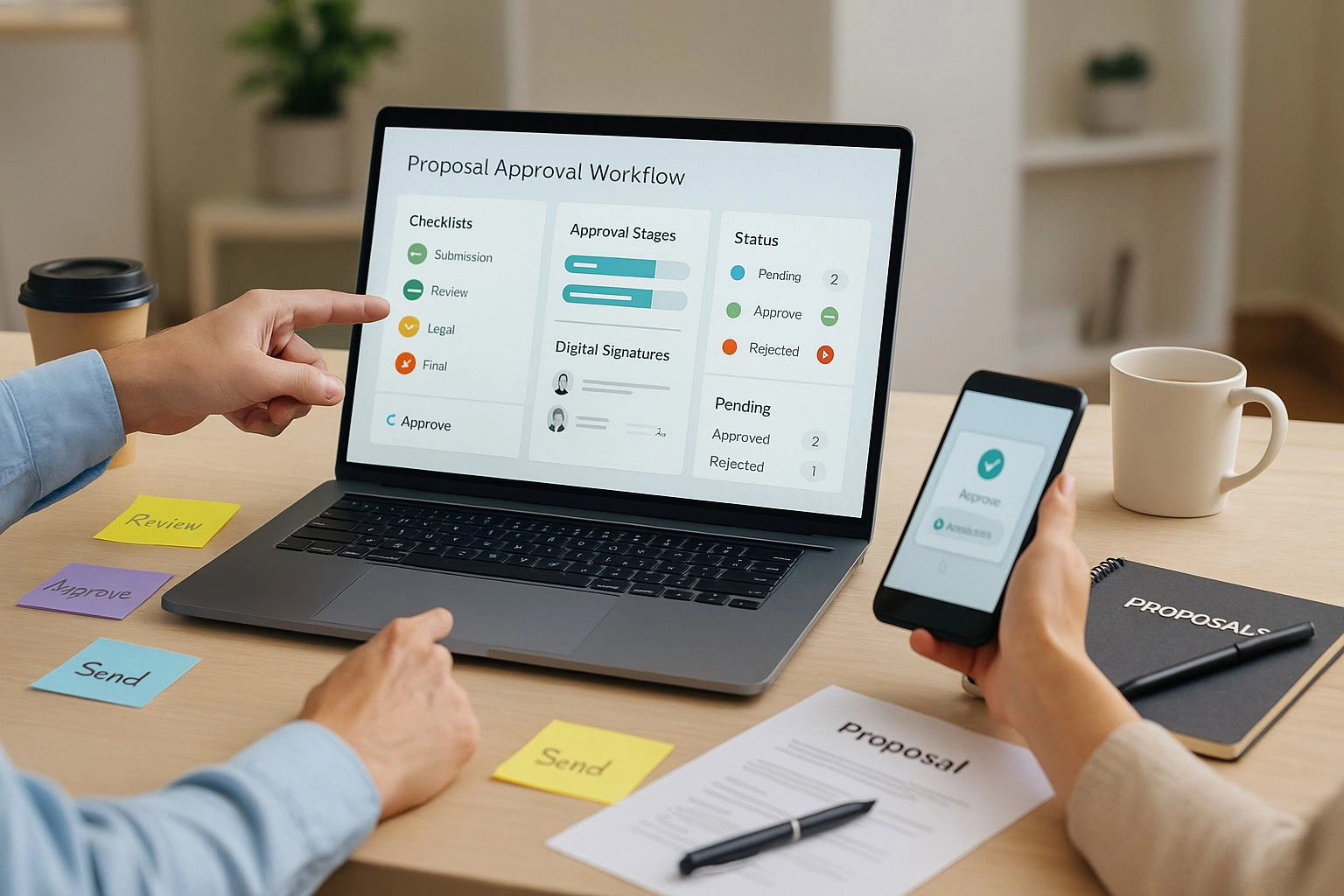Writing a business proposal often means the difference between getting the gig and watching it go to someone else. For small business owners, agencies, and freelancers, mastering proposal writing isn’t just helpful—it’s essential for client conversion and business growth. Whether you’re responding to a client request, pitching your creative services, or submitting a formal bid, a well-crafted, effective proposal positions you as the best fit for the job.
This comprehensive guide breaks down 10 tips for writing proposals that stand out and persuade clients to choose you. From understanding client needs to using technology that streamlines your workflow, these actionable insights will help you consistently deliver winning business proposals in 2024.
Why Effective Proposals Matter in 2024
Your proposal is often the very first impression a prospective client or donor receives from your business. In a world where competition is fierce, a single document can make you stand out—or leave you overlooked. A truly effective proposal conveys professionalism, addresses the client’s challenges, and demonstrates why you’re the right fit.
Today’s proposal development process is more rigorous than ever. Clients and decision-makers receive dozens, sometimes hundreds, of proposals for a single project. Having a winning proposal allows you to rise above the noise, start the business relationship on the right foot, and set the stage for success.
But expectations keep evolving. Relying on manual, outdated methods is a thing of the past—the true cost of manual proposal writing is simply too high in lost time and opportunity. Embracing digital tools and streamlining your approach puts you at an advantage in the fast-paced landscape of 2024.
Tip 1: Understand the Client’s Needs Before You Write a Proposal
A compelling proposal starts with a deep understanding of what your client actually wants. Before putting pen to paper (or fingers to keyboard), invest time in researching and clarifying:
- The client’s business goals, pain points, and unique challenges.
- Specific deliverables or outcomes the client is seeking, as outlined in their request for proposal (RFP) or project brief.
- The evaluation criteria the client will use to select a vendor or partner.
You can gather these insights by:
- Analyzing the client’s website, press releases, or case studies.
- Reviewing the RFP or speaking directly with the client to ask clarifying questions.
- Understanding past projects or proposals that succeeded with similar organizations.
By aligning your proposal with the client’s specific needs, rather than submitting a generic response, you immediately build trust and show that you’ve done your homework. This groundwork also sets the stage for a solution-oriented proposal that’s prepared to address their requirements from the outset.
For freelancers or agencies juggling multiple projects, using solid project management processes will help you organize this research. You can explore more practical strategies for requirement gathering in this guide to project management essentials for agencies.
Tip 2: Craft a Compelling Executive Summary
What Makes a Standout Executive Summary?
The executive summary sits at the very front of your business proposal. It’s your opening sentence and your first page—a short but crucial section that frames everything to come. If it’s confusing or generic, decision-makers may not even read on.
- Capture the client’s attention fast. State the client’s challenge or need up front, then introduce your overarching solution.
- Be clear and concise. Stick to the most important details and avoid lengthy explanations.
- Highlight your value propositions. What makes your approach unique or better than your competitors’? Spell out your differentiation.
- Show you’ve listened. Reference specific facts from their RFP or project brief to demonstrate attentiveness and professionalism.
A strong executive summary grabs attention, makes your point quickly, and gives the reader confidence that your proposal is worth their time.
Tip 3: Structure and Format Your Proposal for Clarity
The Power of a Well-Organized Proposal
A well-organized proposal increases your chances of success by making evaluation straightforward for busy reviewers. A confusing or cluttered structure, on the other hand, can hide your strengths—even if your content is solid.
- Use clear headings and subheadings so reviewers can easily navigate each section.
- Break up dense text with bullet points, numbered lists, or tables for readability.
- Include visual elements where possible—charts, graphs, or process diagrams aid understanding.
- Follow any formatting requirements included in the RFP. Adhering to instructions demonstrates professionalism and respect for the client’s process.
- Maintain a professional, branded look throughout the proposal. Consistency here reinforces your identity and credibility, much like a customized invoice or report. For inspiration on creating branded business documents, check out the step-by-step approach in this guide to creating professional and branded invoices.
Remember: reviewers may be passing your proposal between multiple stakeholders. Make sure it’s easy to read, logically organized, and visually appealing for all.
Tip 4: Address the Client’s Pain Points—and Offer Solutions
Add Value Beyond the Basics
A winning proposal isn’t just a list of your services or products. It’s a strategic document that shows a clear understanding of your client’s pain points—and proposes solutions that directly address them.
- Clearly identify the client’s current challenges or roadblocks.
- Explain how your solution overcomes those challenges.
- Describe the value you provide beyond the standard deliverables. This could be increased efficiency, cost savings, a smoother workflow, or expertise in solving similar problems.
- Quantify benefits where possible, such as projected time saved or expected ROI.
This approach shifts your proposal from “what we do” to “how we’ll help you succeed.” The more tailored your solution, the more compelling your business proposal will be.
Tip 5: Use Clear, Jargon-Free Language
Keep Your Proposal Easy to Read
The best proposal writing avoids unnecessary technical terms or complicated acronyms. Aim for language that is clear and concise, making it easy to read and understand for all decision makers—technical and non-technical alike.
- Avoid using jargon or “insider” language unless requested by the client.
- Replace complex phrases with straightforward alternatives wherever possible.
- Have someone from outside your field review the proposal before you send it—they’ll quickly spot confusing sections.
Effective proposal writing is about communication; don’t risk your message being lost because reviewers can’t decipher it.
Tip 6: Back Up Your Proposal with Relevant Data and Results
Add Credibility through Evidence
Saying your solution works isn’t enough—back up every key claim with credible data, metrics, or relevant results. When you provide evidence, your proposal feels more trustworthy and substantial to potential clients.
- Include metrics such as time to completion, conversion rates, or cost savings from past projects.
- Cite real-world financials or results when possible to demonstrate how your approach delivers value.
- Refer to client testimonials or feedback (while maintaining privacy and professionalism, never inventing details).
- Add visuals such as graphs or brief infographics to make data easy to absorb.
Looking to present persuasive numbers? Check out these essential financial metrics for business owners for examples of data that can enhance your proposals.
The right evidence adds credibility to your business proposal and gives decision makers clear reasons to trust you.
Tip 7: Customize Each Proposal—Don’t Just Copy and Paste
Why Personalization Drives Higher Client Conversion
Sending out the same, cookie-cutter pitch to every client is a quick way to get ignored. To create proposals that convert, tailor your writing to speak directly to each client’s situation. Here’s how to do it:
- Reference the client’s specific goals or requirements and echo their language where appropriate.
- Highlight why you’re uniquely qualified to solve their problem, not just anyone’s.
- Align your solution with the client’s stated evaluation criteria.
- Personalize value propositions so they feel custom-built, not generic.
Using proposal development tools can help you automate routine sections while customizing the most important content—explore why switching away from templates and spreadsheets increases impact and efficiency.
The more you invest in thoughtful personalization, the greater your odds of impressing and converting potential clients.
Tip 8: Follow All Instructions and Check Submission Requirements
How to Ensure Your Proposal Isn’t Disqualified
Many otherwise strong proposals are immediately disqualified for failing to follow basic instructions. This means your attention to detail is just as important as your ideas. A quick checklist for compliance:
- Read the RFP or solicitation documents carefully—highlight all submission guidelines and questions.
- Adhere to requested formats, section orders, and page limits.
- Gather all required attachments, signatures, or supplementary materials.
- Review for deadlines and build in extra time for last-minute issues.
- Double-check your work against the client’s checklist to be sure nothing is missing.
By following instructions meticulously, you increase your proposal’s chances of advancing—no matter how competitive the field.
Tip 9: Use Visuals and Design Elements to Engage Reviewers
Enhance Readability and Recall
Visuals do more than make your proposal attractive—they also reinforce your messaging and help reviewers remember your points.
- Incorporate charts and graphs to summarize data.
- Use infographics, timelines, or process flows for complex explanations.
- Add branded color schemes and well-chosen icons to enhance the professional feel.
- Be careful not to over-design—make sure visuals support your message and don’t distract from it.
Remember, a well-written proposal uses design and layout to guide the reviewer’s attention, drive clarity, and ensure your solution is memorable.
Tip 10: Streamline Proposal Creation with the Right Tools
How Technology Can Help You Create Proposals Faster and Smarter
Modern proposal software can save you hours, reduce mistakes, and let you focus on substance rather than formatting headaches. With the right tools, your proposal development process is not only smoother but also more consistent and accurate.
- Templates streamline repetitive sections while preserving your branding and voice.
- Digital signatures eliminate manual printing and signing tasks, speeding up approval workflows.
- Client portal access gives your clients a transparent way to review, comment, and track proposals and related documents all in one place.
- Automation features help with reminders, follow-ups, and status notifications, ensuring nothing slips through the cracks.
With Proposal Builder, for example, you can create, send, and track proposals in a way that’s both user-friendly and tailored to each client. Automate routine tasks and utilize integration options such as Zapier to connect with your favorite productivity apps and workflows.
This approach not only increases your efficiency but also improves the overall experience for both your team and your clients.
Common Mistakes in Proposal Writing (and How to Avoid Them)
Even experienced professionals can fall into certain traps during the proposal writing process. Watch out for these pitfalls:
- Overlooking the client’s true needs or missing critical requirements.
- Poor structure or confusing organization that makes your content hard to follow.
- Overuse of jargon that alienates non-expert reviewers.
- Missing key submission instructions or deadlines.
To avoid these, use a thorough checklist, plan every proposal process step, and take advantage of modern tools to streamline your approach. If you want to ensure your proposal is easy to read and ticks every box, prioritize clarity, structure, and compliance from the start.
Conclusion: Your Checklist for a Winning Proposal in 2024
To summarize, writing an effective proposal in 2024 means far more than filling out a template. It’s about understanding your client, telling a compelling story, structuring your information for clarity, and proving your value with evidence—and it’s about constantly learning and adapting your approach for the best results.
By following these ten tips, you can transform every proposal into a strategic business asset:
- Understand the client’s needs
- Create a compelling executive summary
- Structure for clarity
- Address pain points with solutions
- Write in clear, jargon-free language
- Support claims with data
- Customize every pitch
- Follow instructions exactly
- Use engaging visuals
- Streamline your process with the right tools
Consider using technology, such as the Proposal Builder feature, to automate and elevate your proposal writing process. With a consistent, well-organized workflow, you’ll increase your success rate and deliver a better experience for your clients—every single time.


